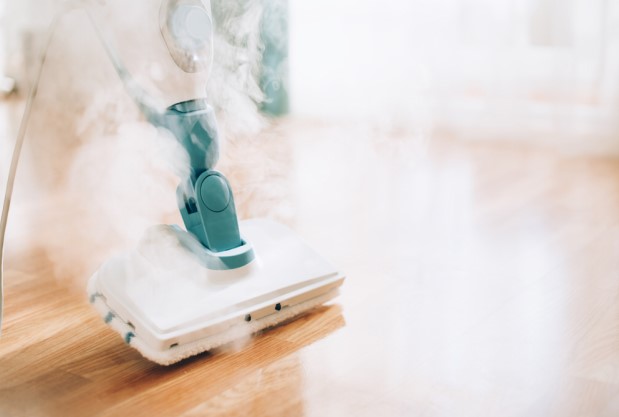We take pride in our carpeting and floorboards, even though it’s a year-round endeavour to keep them clean and looking good. Using baking soda before turning on your vacuum can older do so much to keep your carpets clean, and with steam cleaners being more commercially available than ever before, it’s no wonder that more people are choosing to invest in their own steam cleaning gear. If you’re looking to make the switch, follow this handy guide to DIY steam cleaning.

1. Pick your cleaning supplies
Whether you’re in the market for a handheld steam mop or a dedicated carpet cleaner, you’ll need to decide what you want from your new cleaning tool. Are you looking to invest in a spot cleaner to reduce the risks of developing everyday stains from food or pets? Or do you want an upright carpet cleaner that’ll transform whole rooms in a matter of minutes? If your house primarily has wooden floorboards with a few select rugs or carpeted areas, it’s worthwhile investing in a steam mop to keep your various floors looking nice and fresh. For houses with plenty of carpeting (especially lighter-coloured carpeting), it will definitely be more cost-effective investing in your own steam cleaning supplies than hiring pricey professional services every once in a while.
2. Vacuum first
Regardless of whether you’ve got more floorboards or carpets, you’ll need to vacuum before you turn on your steam cleaner, just to make sure enough dust is removed from your floors before you start steaming. The benefits of steam cleaning include killing germs and bacteria and even improving air quality by both removing dust as well as eliminating the need for the use of chemical cleaners in your living spaces. But you won’t be able to reap these benefits if you haven’t ensured that your floors are free of superficial dust, lint, hair, fur, and other large pieces of residue. By doing a preliminary vac, you’ll ensure that these larger pieces of residue won’t get embedded in your carpet fibres, or even get trapped in your steam cleaner. You’ll want to make sure that your supplies stay in good condition so they’ll be ready to clean whenever you are.
3. Work in zones
Despite the major positive impact it has on those of us with allergies, steam cleaning can admittedly be a little more cumbersome than simply vacuuming, in the sense that once an area has been steam cleaned, you won’t be able to enter it again for a while, just to allow the moisture from cleaning to properly evaporate. But unlike regular mopping, using steam mops won’t leave your living spaces off-limits for hours on end.
You’ll be glad to hear that after your cleaning has been completed, it should only take twenty or so minutes in a room temperature environment for your floors to be accessible once again. If you’re looking to make sure that they stay immaculate for longer periods of time, consider implementing ‘food free’ or ‘pet free’ zones into your home too. Whether or not these zones stick is another story, but there’s certainly no harm in trying it out and seeing what works.
Finally, it also helps to stay on top of maintenance with your cleaning tools. Like you regularly clean out your vacuum and rinse its filters, you’ll need to change the water in your upright steam cleaners ideally after every use. And keeping a good stock of pads for different types of surfaces is also advisable, just so you’ll always be well-equipped in case of any emergency stains or spills.
| < Prev | Next > |
|---|




